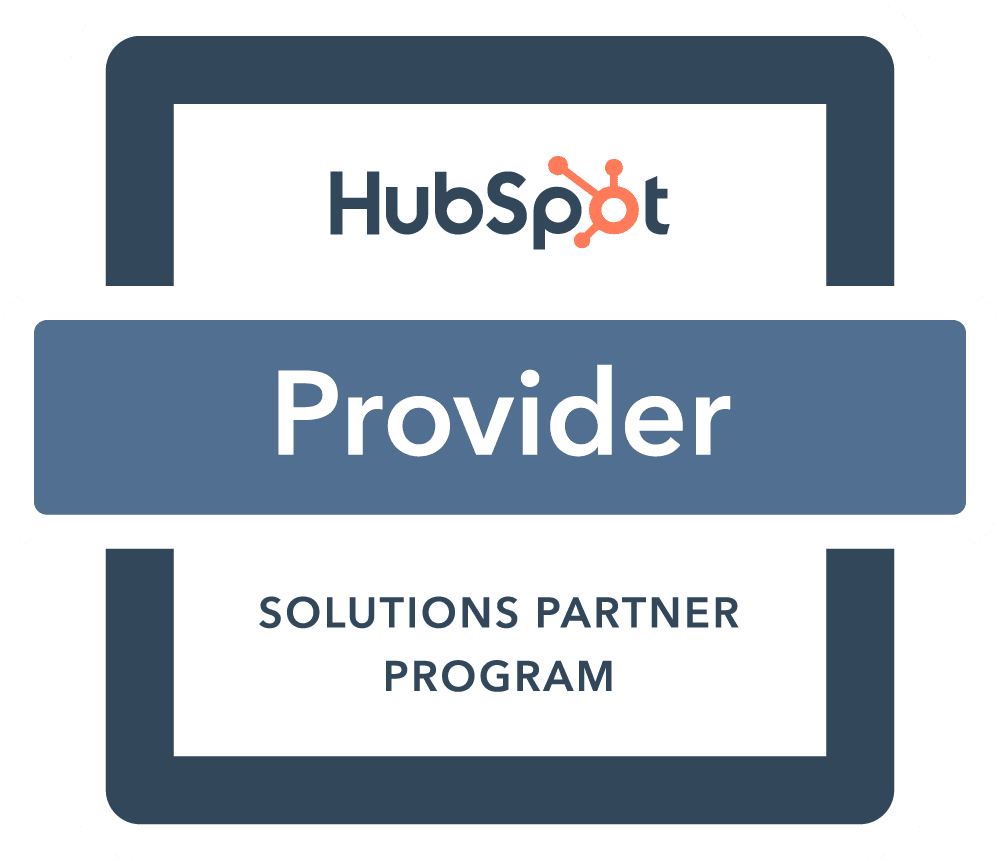
Let’s be honest, most people know about Google Analytics but just as much fail to understand the many benefits of int...

Improved email conversion rates by 44% and deliverability by 29% for an established travel company

Created the beginning-to-end analytics implementation for the #1 physician application in the world

Implemented advanced enterprise analytics for the largest agriculture company in the United States
.png')
Schedule a consultation with a DAP expert today and find out what we can do for your business.




At DAP, we deeply believe in using data to drive decision making. It’s not enough to simply have a lot of data: understanding how to acquire the RIGHT data and derive the most impactful insight from it is how you truly transform your business in the long run.
The internet is undeniably crowded; there are millions of companies and businesses competing with each other to generate sales. This all begins and ends with your customer, and understanding digital analytics is the key to understanding their journey. Our experts start by analyzing your business’s competitive landscape, meaning we track how your competitors are converting and retaining customers. We then take that information to determine exactly who your customers are and their needs based on their purchasing behavior. Only by having a clear interpretation of this data can we craft a customized digital marketing strategy to boost your visibility.
Your website’s traffic can come from many sources. Visitors might have searched for your services on Google and Bing or by clicking on a social media post. By leveraging the power of your analytics platform, you can identify how each of these segments is contributing to your growing customer base.
There’s more to digital marketing too; it’s about defining KPIs, sales, and revenue metrics that will grow your traffic sources. Our analytics agency is experienced in identifying which KPIs will best measure your success. We take conversion rates, leads and click-through rates into account so we can pin-point exactly where your business is excelling and which areas need improvement.
Each business has different budgets and goals based on a number of factors. We have worked with clients from all different industries and have the skills to advise you on how to most effectively market your business within an allocated budget.
Book a meeting today
In the context of digital solutions, analytics refers to the practice of tracking end user behavior to obtain valuable data, and interpreting that data to improve the performance of your digital properties against KPIs.
Product analytics helps organizations gain insights into a digital product (most frequently a mobile application, but can also include websites and wearables). Product analytics is foundational for getting the most value from a digital product.
Website analytics encompasses the overall plan for how a business obtains and interprets data from its website. This process helps organizations make more informed decisions about how to improve.
It’s one thing to simply have data, it’s another thing to actually have the right data and gain actionable insights from it. The right analytics strategy is an invaluable tool for helping organizations make more informed decisions that improve their bottom line.
Absolutely! We frequently work with clients to define their analytics strategy and roadmap, while also crafting a digital marketing strategy to ensure both short-term and long-term success.
The service(s) that will best suit your needs could depend on several variables. Contact us today for a free consultation.
We recommend, at minimum, one month of strategic work. The up front work of thoughtfully determining KPIs and event taxonomy will set you up so that the implementation goes far more smoothly and delivers the best insights.
Many companies will have incomplete or inadequate analytics that aren’t capturing the full scope of data they require to make the best decisions. We can help you close that gap and become a smarter organization.
Have questions about your next analytics project? Schedule a consultation with a DAP analytics principle today and find out what we can do for your business.
DAP has an experienced team of analytics principles, analytics developers, and reporting specialists dedicated to helping you make sense of your data.
On-time and on-budget delivery of your analytics project to ensure that you not only meet your deadlines — you beat them.


This year alone, Digital Authority Partners was named the: Gold Winner – Best Search Engine Optimization Agency, one of the Top B2B Companies by Clutch, an Expertise Best Agency, and one of UpCity’s Top Digital Agencies in the USA.
A focus on tomorrow means your analytics strategies will help you meet the continually evolving demands of the marketplace.
We achieved a remarkable 200% increase in Sales Qualified Leads year over year by rebranding a client’s platform, implementing a refined SEO strategy, and strategically aligning marketing with sales enablement efforts tailored to SaaS-focused buyer personas.
Our Fractional Executives transformed a franchise with 160+ locations, boosting sales by 16% in just one year. Our approach drove more foot traffic, enhanced their social media presence, and revamped their website and paid media strategy, delivering outstanding results.
Helped one of the largest healthcare device manufacturers in America generate 4X more sales than originally forecasted through our FCPO, FCMO & FCTO executive expertise.
We helped a client achieve a 9.65X return on marketing spend by using data to optimize SEO, paid media, and email marketing efforts.
Our fractional executive experts helped a leading personal injury firm generate 40% more cases & 28% more revenue within a year of working with us.
Helped a 13-year-old BPO company double revenue & headcount and reach position 2,248 of the Forbes 5,000 fastest-growing companies through the power of & conversion rate optimization within 18 months.
Helped a payment processing company increase transactions by 2 billion dollars and profits by 17% within 9 months.
Our transformative analytics & marketing strategy boosted an industry leader’s website engagement by 23% and delivered an impressive 7X ROI.
We achieved a 420% increase in lead generation for an educational platform through an ROI-focused marketing campaign that utilized paid search, email marketing, HubSpot automation, and advanced analytics.

Let’s be honest, most people know about Google Analytics but just as much fail to understand the many benefits of int...

Here’s how most digital features are managed: A stakeholder (or product manager) has an idea. A team of user experien...

Data-driven marketing is a set of techniques and tactics that leverages massive amounts of data to create effective m...

This was true before the digital revolution, but it is especially true now. Everything that happens on the Internet can be counted, resulting in not a lack of data for many organizations, but too much data. They don’t know which numbers matter and which don’t, nor do they know how to extract actionable information from the raft of data in their possession.
An analytics agency can help an organization put in place the tools needed to collect more data, but it can do so much more than that. An analytics agency can help an organization cut through the noise and identify the data that matters, as well as build a data-driven strategy. In doing so, an analytics agency can turn an organization’s proprietary data from dead weight into its greatest asset.
Data analytics can unlock a plethora of positive business outcomes for savvy organizations—outcomes that more than justify the investment into a professional approach to business analytics.
Some of the benefits an organization can reap from data analytics include:
Data analytics can be grouped into several broad categories. Each category provides a different insight about your organization. Some types of data analytics have been around for decades. Others are new, dependent on advanced technologies, and still in the process of proving their effectiveness in providing actionable intelligence.
Let’s look at four broad categories of data analytics, in ascending order of sophistication—descriptive analytics, diagnostic analytics, predictive analytics, and prescriptive analytics.
As the name implies, descriptive analytics describe what has happened in the past. It takes historical data collected by an organization and uses it to describe what has happened over periods of time in the past.
Descriptive analytics help organizations track changes over time to understand what has happened to them in the past and identify strengths to maximize, as well as weaknesses to shore up.
Descriptive analytics look at the past and ask the question “What happened?” They might note changes in price, changes in revenue, growth in sales or number of users, cost per lead, customer lifetime value, and other key performance indicators.
While it is the most basic form of analytics, descriptive analytics will always be necessary. Organizations use descriptive analytics to complement more modern forms of analytics, like predictive and prescriptive analytics. The bigger the organization, typically the more descriptive analytics it will need to make sense of its operations.
If descriptive analytics asks “What happens,” diagnostic analytics asks “Why did this happen?” Whereas descriptive analytics lists the facts, diagnostic analytics attempts to drill down to the reasons the facts came to be.
The diagnostic analysis process usually entails:
Diagnostic analysis is useful for extracting actionable insights from massive data sets. Larger organizations often have more data than they know what to do with, and little idea of how to turn that data into an asset. Diagnostic analysis helps them maximize the asset value of their data.
It’s fine to look at past data to see what happened, and to draw conclusions about why it happened. But wouldn’t it be better to use analytics to make accurate projections about what will happen in the future? That would be a decided competitive advantage!
As the name implies, predictive analytics takes current and past data and attempts to draw conclusions about the future. This might seem sci-fi, but predictive analytics has a long history. Predictive analytics is well-known in the industries of credit scoring, underwriting, and risk analysis.
Modern tools like machine learning, data mining, and predictive modeling make predictive analytics accessible to a much wider range of organizations. Since many predictive models rely on historical data, predictive analytics go hand-in-hand with descriptive analytics.
Predictive analytics can help organizations predict customer behavior, estimate future demand, prevent fraud, manage inventory, and reduce risk.
Descriptive analytics look at what happened, diagnostic analytics look at why it happened. Predictive analytics attempt to prognosticate what will happen in the future.
Finally, we arrive at prescriptive analytics. Like a doctor writes a prescription, prescriptive analytics take the other forms of analytics a step further by recommending an actual course of action. Organizations look to prescriptive analytics to tell them what to do next.
It does this by combining the functions of diagnostic and predictive analytics—predicting what will happen, why it will happen, and using that information to make a recommendation about the best course of action.
Relatively new on the scene compared to the other forms of analytics, prescriptive analytics are particularly valued by CFOs, as they enable them to quantify the outcomes of various choices.
When you enter the digital realm, you will never run out of things to count. Everything on the web is recorded somewhere and available to be quantified. Analytics tools can produce many useful vectors of data analytics can easily become available to you, including:
The internet introduced many conveniences into daily life. For businesses and organizations, one of the biggest boons of the internet is that everything online can be quantified. Every action that a user takes on your website is a piece of data that can contribute to your analytics strategy.
Examples of web analytics that might become key performance indicators (KPI) for an organization includes:
Most organizations live and die by their marketing efforts. Marketing is the act of raising brand awareness to the point that the brand becomes “top-of-mind” for the target demographic. Marketing generates sales, brand ambassadorship, market dominance.
Digital marketing is particularly powerful from an analytics standpoint. Since you can track everything that happens on the web, you can drill down to some very specific key performance indicators.
If you can identify a marketing strategy where it costs you less to acquire a customer than you can expect them to purchase, you win. You can literally buy growth—spend as much money as you have access to in order to scale your profits. You can also tell with laser accuracy when it’s time to abandon a marketing campaign and devise a new one.
Examples of key performance indicators that marketing analytics can unearth include:
Since 2016, more internet searches take place on mobile devices—smartphones, tablets, etc.—than on desktop devices. Consumers spend an average of 4.2 hours per day on apps, and the $100+ billion mobile app industry has spawned over 2 million apps on the iOS App Store alone, with another 3 million on the Google Play store.
Mobile apps and mobile-friendly websites are a powerful way for organizations to connect with their target audience—and with those mobile experiences come another set of analytics. In many cases, mobile analytics mirror web analytics, but in a mobile environment. Other mobile analytics are unique to the platforms.
Examples of mobile analytics include:
Social media platforms are powerful channels for brand outreach and customer interaction. 90% of social media users buy products from brands they follow on social media sites like Facebook, Twitter, and Instagram.
With each social media platform comes its own suite of analytics to track. Some of the analytics will overlap with marketing analytics, since social media platforms are also a powerful channel for digital marketing.
Examples of social media analytics include:
It’s fair to wonder whether or not partnering with an analytics agency is right for your organization. Do you really need to implement analytics? Will they help? Is there a chance they won’t work?
More organizations could benefit from the help of analytics experts than realize it. The following is an incomplete list of who should consider reaching out to an analytics agency.
Working with an analytics agency is a no-brainer for B2C companies. Business-to-consumer (B2C) transactions are well-documented all across the internet. B2C companies can extract a wide variety of insights about B2C interactions not only with their own brands, but with competitive brands.
By simply tapping into the data, B2C businesses can optimize their marketing strategies, streamline customer sales funnels, and cut costs to maximize profit and scale up operations.
The internet is less awash with data about business-to-business (B2B) transactions, but it is out there. In fact, B2B companies have even more incentive to work with an analytics agency. Analytics experts know where to look for hard-to-find, actionable B2B data that most consumer-level analytics tools may miss.
Analytics is mandatory for app owners. You need to have some way of tracking bugs, performance, crashes, and other problems so that they can be fixed to provide a better user experience. App analytics can also track user interactions to find out which features of the app are working and which ones need improvement.
Organizations in the healthcare, finance, government, and other sensitive sectors often face serious regulatory compliance burdens. They could face fines or shutdown if they fail to comply. Analytics agencies can help these organizations gather and analyze the data they need to validate that compliance.
One reason this is so important is that these organizations are highly susceptible to fraud. If security protocols are compromised, huge amounts of money and users’ sensitive personal information may be compromised. Data analytics form a critical component of risk-management and fraud reduction in these sectors.
Without data, you are guessing—throwing darts at a board with a blindfold on. Is that any way to optimize a business, especially when better options exist? Any organization that wants to make business decisions based on data rather than on hunches, gut feelings, or guesswork can benefit from the input of a data analytics agency.
It takes more than bean-counting. A good analytics agency takes an exacting, methodical approach to data analytics, deploying the right framework (more on that later) to produce a desired outcome.
Different frameworks work in different ways, but an analytics agency will usually walk the data analysis effort through seven well-defined steps:
Don’t collect and analyze data just to collect and analyze data. There has to be a business need for each analytics effort you implement. Otherwise, why divert resources to it?
So get specific—drill down to the business need for the analysis. Is it to unstick your automated customer journey to increase sales? Validate regulatory compliance? Reduce the risk of fraud? Cut costs? Improve the ROI on your marketing dollars?
To get anywhere, it helps to know where you are going. The business need is your compass, pointing you in the right direction
Welcome to the smorgasbord of choices. Once you decide to implement analytics, you have a wealth of options to choose from—more data than you are likely to know what to do with.
The goal is to match the data with your business goals and pick a set of key performance indicators (KPI). KPI are the data points most relevant to the business need and the outcome you are driving toward. Once you have defined your KPIs, you can ignore all the other numbers and start crunching the ones that matter.
Once you know what data to focus on, start with the descriptive analysis. What does this data tell you about your organization’s past? What was going on behind the scenes that made the numbers what they were?
Once the descriptive analysis is done, you might move on to diagnostic, predictive, and/or prescriptive analysis, depending on the framework.
Use the historical data to create a model of potential future results. What does the past trend indicate the future holds for your organization if the data follows the trend set by the past? Does it lead to the desired business outcomes defined in Step 1, or does it fall short?
If your predictive model falls short of the business outcomes from Step 1, it’s time to create a hypothesis—an educated guess—about what might bend the curve further in the direction of the desired business outcome.
Input your hypothetical assumptions into the predictive model and see what it does to the future projection of the data.
Hopefully the assumptions of your hypothesis bend the curve in a favorable direction. If not, try another hypothesis. If it moves in the right direction but still falls short, keep tweaking and refining your hypotheses until the predictive model indicates the business outcome you are looking for.
Now that you have a hypothesis validated by the predictive model, it’s time to put that hypothesis into practice in the real world. Strategically implement a plan of action to reproduce your hypothetical assumptions.
Track the results and see if they align with the predictive model. If they fall short of expectations, adjust your strategy accordingly.
Collecting data is not enough. Even resolving to analyze the data is not enough. Three team members could approach the same set of data with three completely different approaches and produce three conflicting results or recommendations. What to do? Who is right?
To get everyone on the same page and extract reliable, actionable insights, you need an analytics framework. If data analytics is a game, an analytics framework sets out the rules of the game. Soccer balls and volleyballs are similar in many ways, but the rules make it possible for a team to get on the same page about what to do with that ball.
In the contents of data analytics, an analytics framework helps an organization:
A data analytics framework consists of four stages:
Analytics frameworks can be developed from scratch, or repurposed from previous similar projects. Several open-source automated analytics frameworks can help large organizations with huge quantities of data to sift through. Examples include Apache Cassandra, Apache Storm, Knime, Lumify, Rapidminer, and Datawrapper.
Bringing in a third-party analytics agency may seem like a luxury. Aren’t analytics something you can implement on your own or with an in-house team?
If you have the personnel and the expertise, data analytics can be done in-house. But remember, you will be devoting resources to your analytics no matter what. If it isn’t money, it is time—valuable personnel time or your own valuable time, which you could be spending on other high-value activities.
Note as well that even if you have the personal (or personnel) time to devote to implementing analytics, it takes expertise to interpret the data you will gather. Information overload is a real issue. Remember, most organizations don’t suffer from a lack of data, but from too much data. Only consider implementing analytics yourself if you are certain that you or your team will be able to act on the data you uncover.
While it is possible to implement an analytics strategy yourself or with an in-house team, a professional analytics agency may be well worth the investment. Here are some reasons why working with an expert analytics agency might be the right choice.
Remember, analytics takes more than just data to yield actionable insights. You need an analytics framework—a systematized approach to analyzing the data. And you can’t pick that framework out of a hat—it has to be the right framework for the outcomes you have in mind.
When you hire an analytics agency, you don’t have to guess at the right framework, nor do you have to build it from scratch. The analytics agency will most likely have custom frameworks they used in the past that they can repurpose to produce similar outcomes for you. If your organization requires it, they may also have expertise with big-data automated frameworks and can recommend the right one.
It’s not enough to hire analytics experts—to truly make the most of your investment in your analytics strategy, you should hire an analytics agency that has experience in your industry, as well as a track record of helping businesses like yours.
Remember, your data is a valuable asset, but it’s also a code. An analytics expert who has experience in your industry knows how to read the code—which data points represent key performance indicators, and what action to take in response to their input. Cracking that code unlocks the value of that asset.
While cutting costs by implementing an analytics strategy in-house may be tempting, you may get way more bang for your buck by trusting experts. An analytics strategy is all about maximizing revenue while cutting costs and increasing efficiency.
Ultimately, an analytics company may cost less than devoting in-house resources to analytics, while delivering more value at the same time.
The heart of a great analytics strategy is efficiency. An expert analytics agency can act fast. There’s no learning curve with the tools, no guesswork used in picking key performance indicators, and fewer chances for mistakes.
By moving fast and acting efficiently, a great analytics agency can start delivering a return on your analytics investment far more quickly than an in-house analytics effort.
Handing over control of your data may feel like a mistake, but you don’t actually give up any control by bringing in a third-party analytics agency. The data is still yours—it’s your asset. The analytics agency is just there to collect, interpret, and make recommendations around the data.
In fact, you have more control when you work with data analytics experts. Your data is no longer a vast mass of noise, adding little or no value to your organization. Data analytics experts have the power to unlock the value hiding in your data, waiting to make your organization leaner, meaner, and more profitable.
You actually don’t have a lot to lose by bringing in third-party assistance for your data analytics. The data itself isn’t going anywhere. On the other hand, you have a lot to gain from unlocking the power of your data.
Organizations with strong analytics can massively increase their potential to drive revenue, cut costs, and streamline their organization. The potential upside massively outweighs the downside.